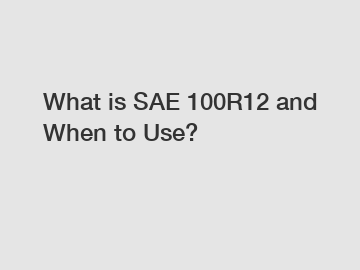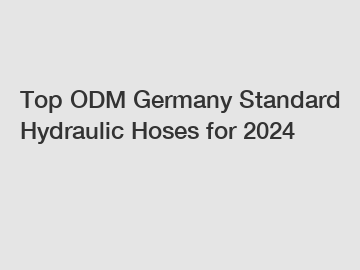How to Ensure CE Certification for Rubber Hoses?
Ensuring CE certification for rubber hoses is a crucial step for manufacturers looking to sell their products in the European market. The CE mark signifies conformity with health, safety, and environmental protection standards. In this guide, we will explore the steps to achieve CE certification, the importance of compliance, and the common challenges faced by manufacturers.
Understanding CE Certification
CE certification is a mandatory marking for certain products sold within the European Economic Area (EEA). It indicates that a product meets specific safety, health, and environmental protection requirements. For rubber hoses, this can include compliance with several directives such as the Pressure Equipment Directive (PED) and the General Product Safety Directive (GPSD).
Steps to Ensure CE Certification
1. Identify Applicable Directives
First, determine which EU directives apply to your rubber hoses. Common directives relevant to rubber hoses include:
- Pressure Equipment Directive (PED 2014/68/EU)
- General Product Safety Directive (GPSD 2001/95/EC)
Understanding these directives is essential to ensure compliance.
2. Conduct a Risk Assessment
Perform a thorough risk assessment to identify potential hazards associated with the use of your rubber hoses. This may involve testing under various conditions to meet the requirements set by the relevant directives.
3. Compile Technical Documentation
Gather and maintain technical documentation that demonstrates compliance. This includes design calculations, test reports, and production processes. The documentation should be comprehensive and well-organized.
4. Choose Notified Bodies Wisely
If required by the directives, select a reputable notified body to conduct conformity assessment procedures. Notified bodies are organizations designated by EU member states to assess compliance with regulations.
Additional resources:How to Obtain CE Certification for Rubber Hose?
5. Perform Product Testing
Ultimate Guide to
Is A Type Of Flexible Plastic Pipe Used For Gas And Fluid Transfer: Insights for 2024
How to Choose the Right Polyester Spiral Belt for Your Juice Press?
How to Choose the Right Hdpe Distribution for Your Needs?
How to Choose 1060cfm Polyester Mesh Cloth for Optimal Performance?
10 Facts You Should Know about SAE100R1
Testing rubber hoses in accordance with standards applicable to your product is crucial. Ensure that the testing is conducted by accredited labs and that all required tests are completed successfully.
The Importance of CE Certification
CE certification is not just a regulatory requirement; it also enhances consumer trust and opens doors to international markets. According to a recent survey conducted by the European Commission, around 64% of consumers feel more confident purchasing CE-marked products. This significantly boosts market potential and brand reputation.
Challenges in Achieving CE Certification
1. Complexity of Compliance
The multitude of directives and standards can be overwhelming. Many manufacturers struggle with understanding which regulations apply and how to meet them.
2. Cost Implications
Achieving CE certification can be costly, especially for small and medium-sized enterprises. This includes expenses for testing, documentation, and potential modifications to meet compliance.
Conclusion
The pathway to CE certification for rubber hoses involves meticulous planning, thorough documentation, and a solid understanding of applicable regulations. By following the outlined steps and engaging with notified bodies, manufacturers can successfully gain CE certification, ensuring their products are market-ready and compliant with EU standards.
For stakeholders in the rubber industry, it's essential to stay informed about evolving regulations and standards. Continuous education and proactive compliance strategies will pave the way for successful certification and reputation in the market.
If you want to learn more, please visit our website ce certification rubber hose, odm sae hydraulic hose manufacturers, china ptfe flexible hose pipe factory.
Additional resources:10 Innovative HDPE Uses You Didn't Know About
Choosing the Right Cloth Conveyor Belt: Key Factors Explained!
Why Choose Polyester Filter Mesh for Environmental Protection?
Top Trends in Dredge Discharge Hose 2024
How Does Eco-Friendly Packaging Reduce Environmental Impact?
Choosing Hydraulic Hose for AC Lines in 2024
The Benefits of Using PVC Pipe for Outdoor Water Line









